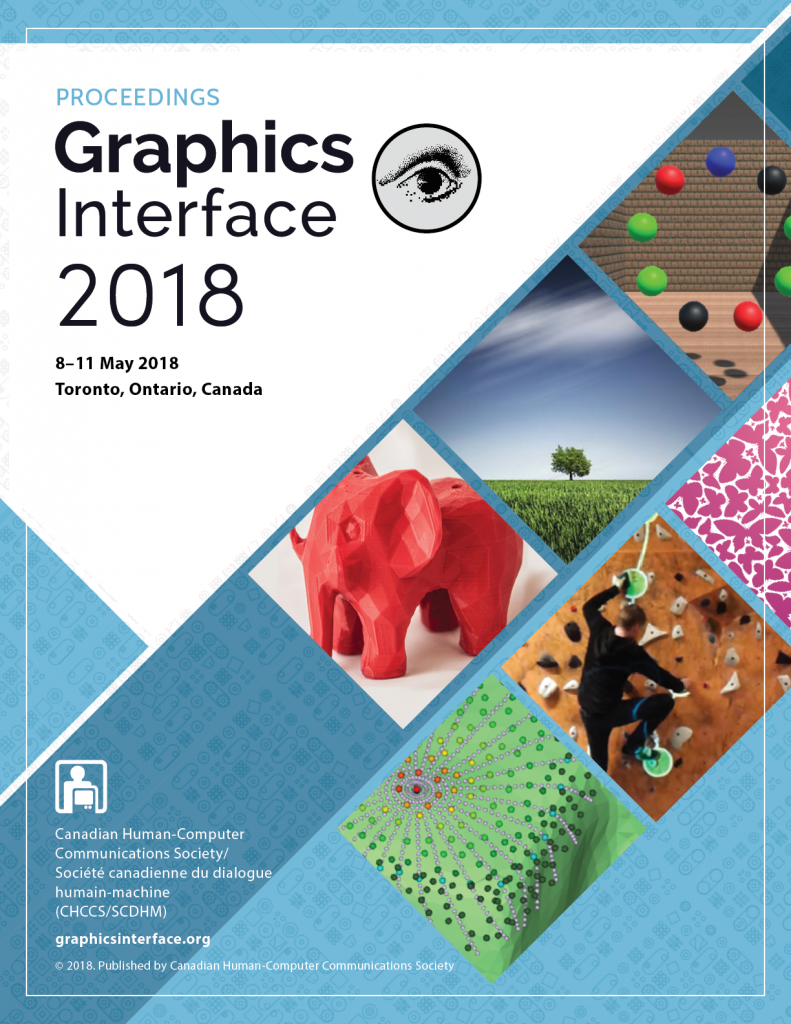BibTex
@inproceedings{Carra:2018:10.20380/GI2018.14,
author = {Carra, Edoardo and Santoni, Christian and Pellacini, Fabio},
title = {gMotion: A Spatio-Temporal Grammar for the Procedural Generation of Motion Graphics},
booktitle = {Proceedings of Graphics Interface 2018},
series = {GI 2018},
year = {2018},
isbn = {978-0-9947868-3-8},
location = {Toronto, Ontario},
pages = {100 -- 107},
numpages = {8},
doi = {10.20380/GI2018.14},
publisher = {Canadian Human-Computer Communications Society / Soci{\'e}t{\'e} canadienne du dialogue humain-machine},
}
Abstract
Creating by hand compelling 2D animations that choreograph several groups of shapes requires a large number of manual edits. We present a method to procedurally generate motion graphics with timeslice grammars. Timeslice grammars are to time what split grammars are to space. We use this grammar to formally model motion graphics, manipulating them in both temporal and spatial components. We are able to combine both these aspects by representing animations as sets of affine transformations sampled uniformly in both space and time. Rules and operators in the grammar manipulate all spatio-temporal matrices as a whole, allowing us to expressively construct animation with few rules. The grammar animates shapes, which are represented as highly tessellated polygons, by applying the affine transforms to each shape vertex given the vertex position and the animation time. We introduce a small set of operators showing how we can produce 2D animations of geometric objects, by combining the expressive power of the grammar model, the composability of the operators with themselves, and the capabilities that derive from using a unified spatio-temporal representation for animation data. Throughout the paper, we show how timeslice grammars can produce a wide variety of animations that would take artists hours of tedious and time-consuming work. In particular, in cases where change of shapes is very common, our grammar can add motion detail to large collections of shapes with greater control over per-shape animations along with a compact rules structure.





















































